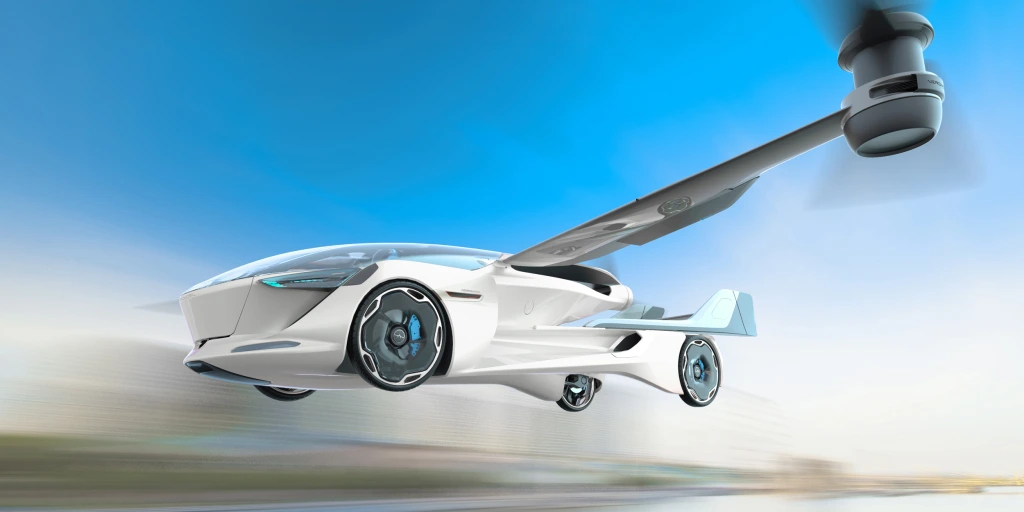WHAT IS A FLYING CAR?
A Flying car also known as a roadable aircraft or a flying vehicle is a form of personal vehicle that combines the characteristics of an automobile and airplane, enabling users to drive on the ground and then take off and fly to their destination.
To achieve lift and continuous flight, flying automobiles usually use wings and propulsion systems.
For years, flying cars have been a symbol of futuristic technology, from The Jetsons to the Blade Runner spinner. But as we are in the 21st century, the question remains: Are flying cars achievable or just a dream?
Flying cars: Reality or fantasy?
Flying cars represent a realistic possibility, with significant technological and regulatory challenges to overcome. recent advancements like electric propulsion, lightweight materials, and autonomous flight systems have brought them closer to reality. With continued innovation and investment, flying cars have the potential to revolutionize transportation, but their widespread adoption may still be several years away.

NEED OF FLYING CAR;
flying car offers promising solution to these problems.
. relief of traffic congestion:
. Urban Mobility:
. Accessibility to Remote Areas:
. Emergency Response and Disaster Relief:
. Time Efficiency:
. positive impact on the environment:
HISTORY;
The idea of a flying car is not new, dating back to the early 20th century. Inventors like Glenn Curtiss and Waldo Waterman attempted to create roadable aircraft, but technical limitations and safety concerns hindered widespread adoption. Notable attempts include the Aerocar and the Moller Sky car, which failed to overcome the challenges of engineering and regulation.
.
challenges & hurdles;
Technical Challenges:
Energy Storage: Developing lightweight and efficient energy storage systems for long-distance flights.
Noise Reduction: reducing the noise generated by flying cars as much as possible to minimize disturbance to urban areas.
Safety Systems: introducing avoidance of collisions and safety systems to prevent accidents.
Regulatory Hurdles;
Certification: certification standards for flying cars to ensure safety and performance requirements.
Licensing: identifying licensing requirements for pilots/drivers of flying cars, which includes training and qualifications.
Traffic Management: Developing new air traffic management systems to handle increased air traffic in urban areas.
3. Infrastructure Requirements:
Vertiports: Building infrastructure for takeoff, landing, and charging of flying cars in urban and rural areas.
Charging Infrastructure: Establishing a network of charging stations for electric-powered flying cars.
Maintenance Facilities: Providing maintenance facilities and services for flying cars, including inspections and repairs.
Economic practicability:
Cost: Overcoming the high cost of development, production, and operation of flying cars.
Affordability: Making flying cars accessible to a wider range of consumers through cost reduction measures.
Insurance: Establishing insurance policies and regulations for flying cars to manage risk and damage.

CONCLUSION:
Flying cars overlap the line between fantasy and reality, with recent advancements bringing them closer to success. While challenges remain, immense. Whether flying cars become a reality ultimately depends on our ability to overcome technical, and regulatory hurdles.
.






